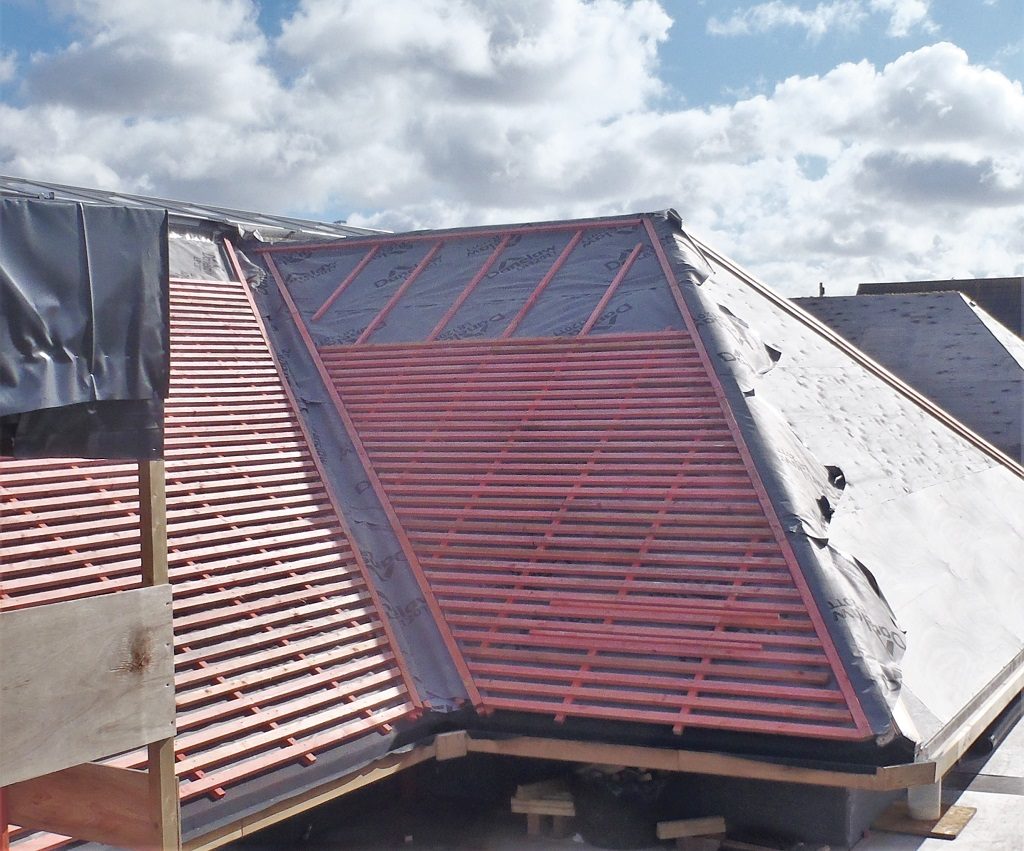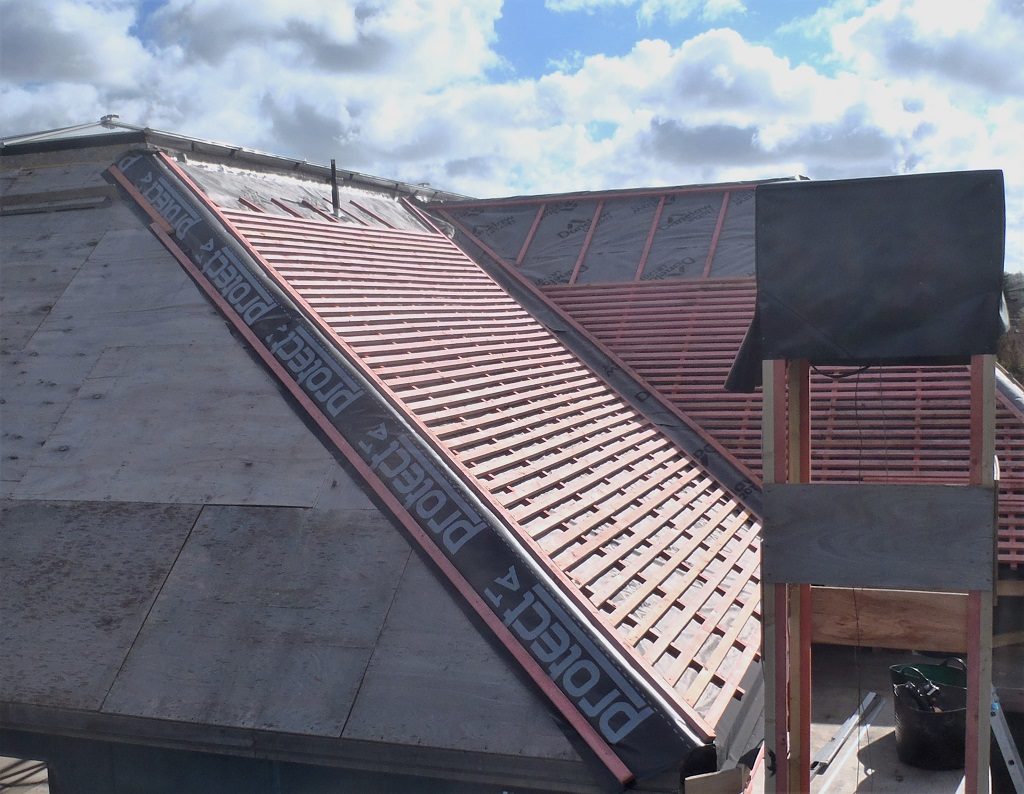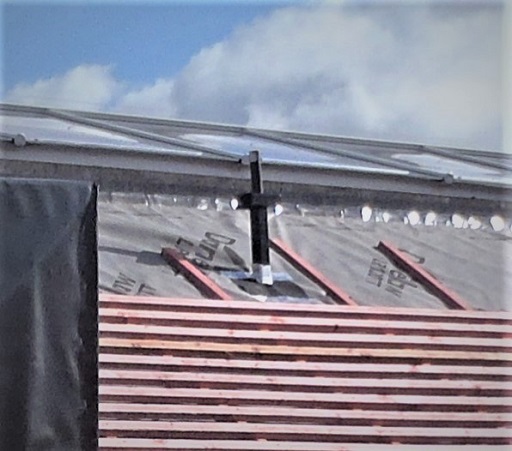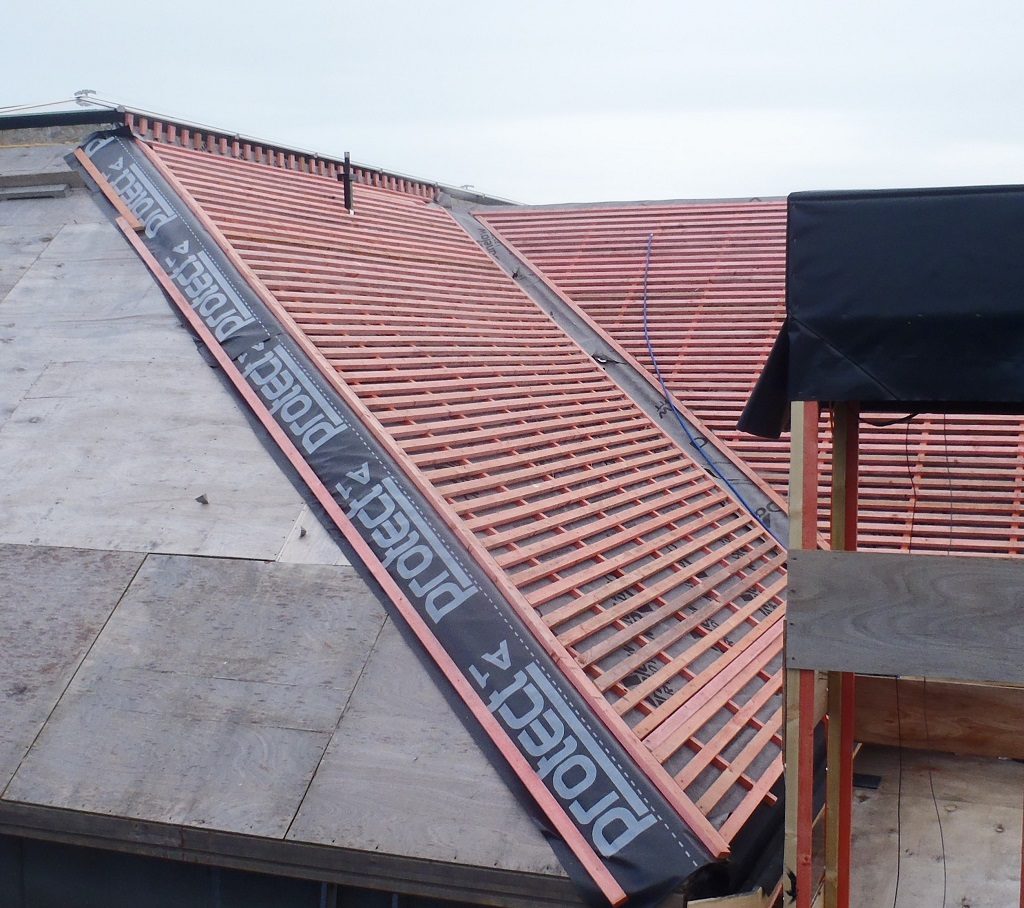This week, we continued with the task of nailing up rows and rows of battens on top of the breathable plastic membrane on the I and J section of the roof.
We also had to do the chimney mounting pole where it came through the roof boards. The breathable membrane had to have a slit cut into it, to slide over the metal pole and then lay in a square rubber piece that had a small square hole cut in the middle and stretched over the square pole too. The rubber went under the membrane above the pole and over the top of the membrane below the pole, to ensure that any water that had slipped past the slates would run off without entering into the house.
Some of our days were interrupted by rain and other commitments but we managed to get a long morning of work in, here and there, before the forecasted rain arrived, or around our other commitments.
Both the I and J sections are both complete, all tile battens are up, all spaced apart 112mm and ready for the Slates to go on.
But we had to fiddle with the valley trough modules to build up a 7 metre line up the inner corner of the roof, and interface the top end into the layers of rubber and breathable plastic membrane and slates so that any rainwater will be collected by the trough and not leak on to the roof boards (which of course is protected with another backup plastic membrane too).
We are also talking about using Lead sheets to provide a very malleable material to shape around the complex angles at these points on the roof, for example, the three way intersection of the K roof and the Ridge line coming out from the house.
Finally, we put up the support battens on the kerb, 100mm high pieces, screwed with stainless steel screws, spaced apart 150mm (half a slate so each slate can have two nails in it), to hold the flashing rubber membrane to seal the junction between the slope of the roof and the kerb. These battens also reinforces the security of holding our breathable membrane into place and not get ripped during strong winds.
The last job started on Saturday, was designing and making various tools to help with the process of shaping the slates, a box container underneath the guillotine tool, to hold the sharp pieces of rubbish (and not scatter across the roof surface and make a mess in among the wooden battens and membrane). We will finish that on Monday and also make a tool to make the task of placing alignment marks up the tile battens much easier. These marks are spaced apart 204mm, the width of a slate plus one hook .




